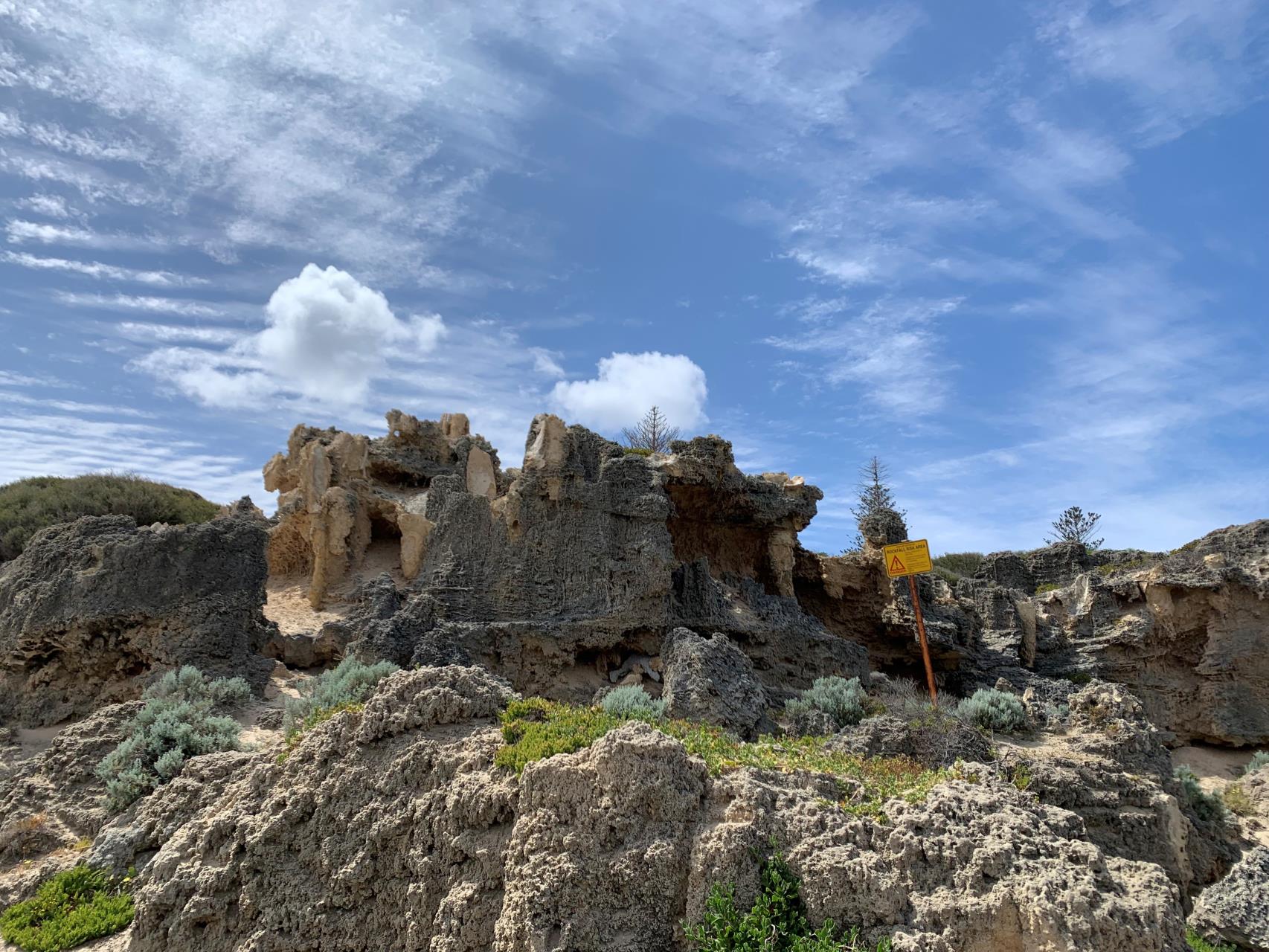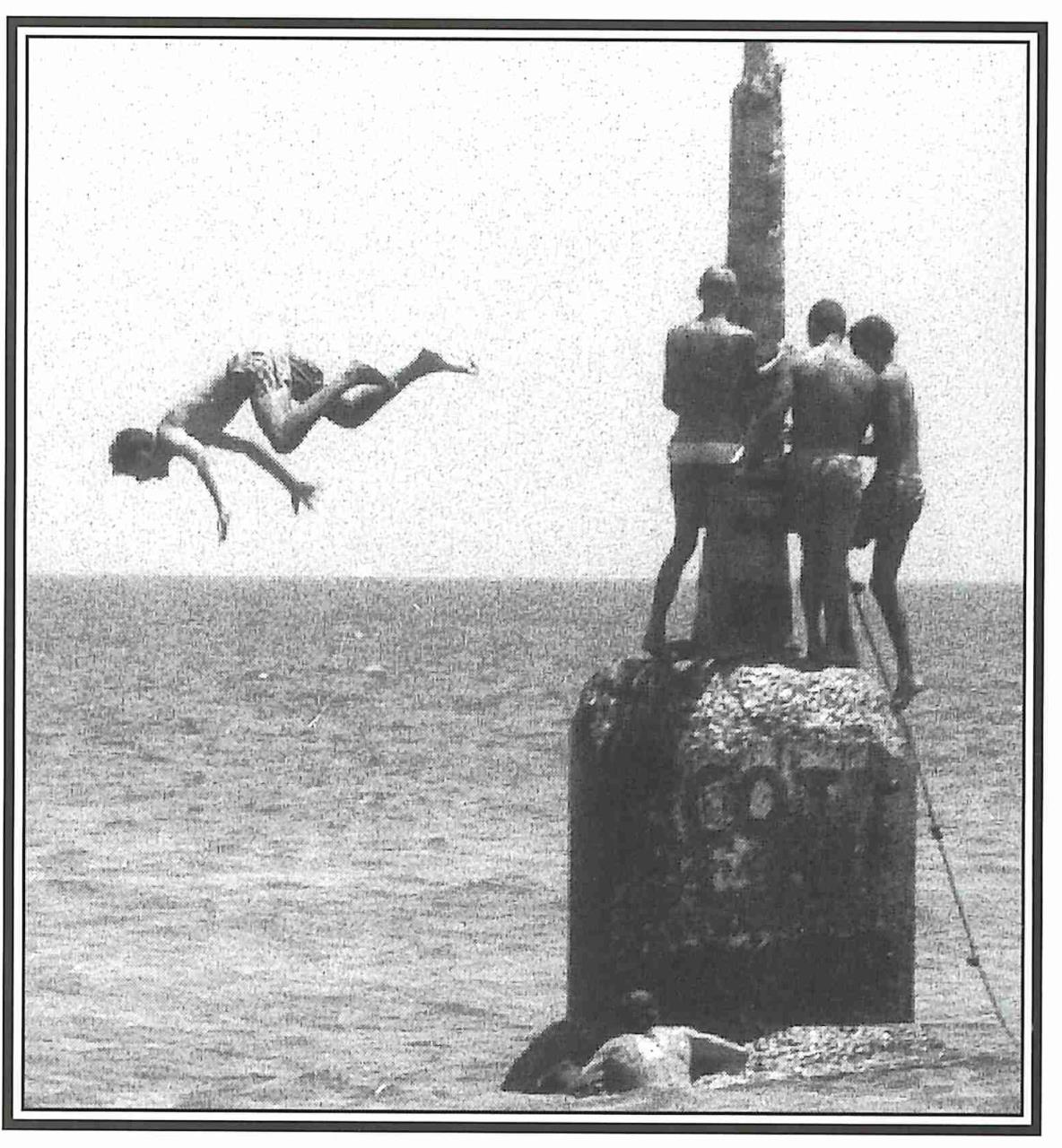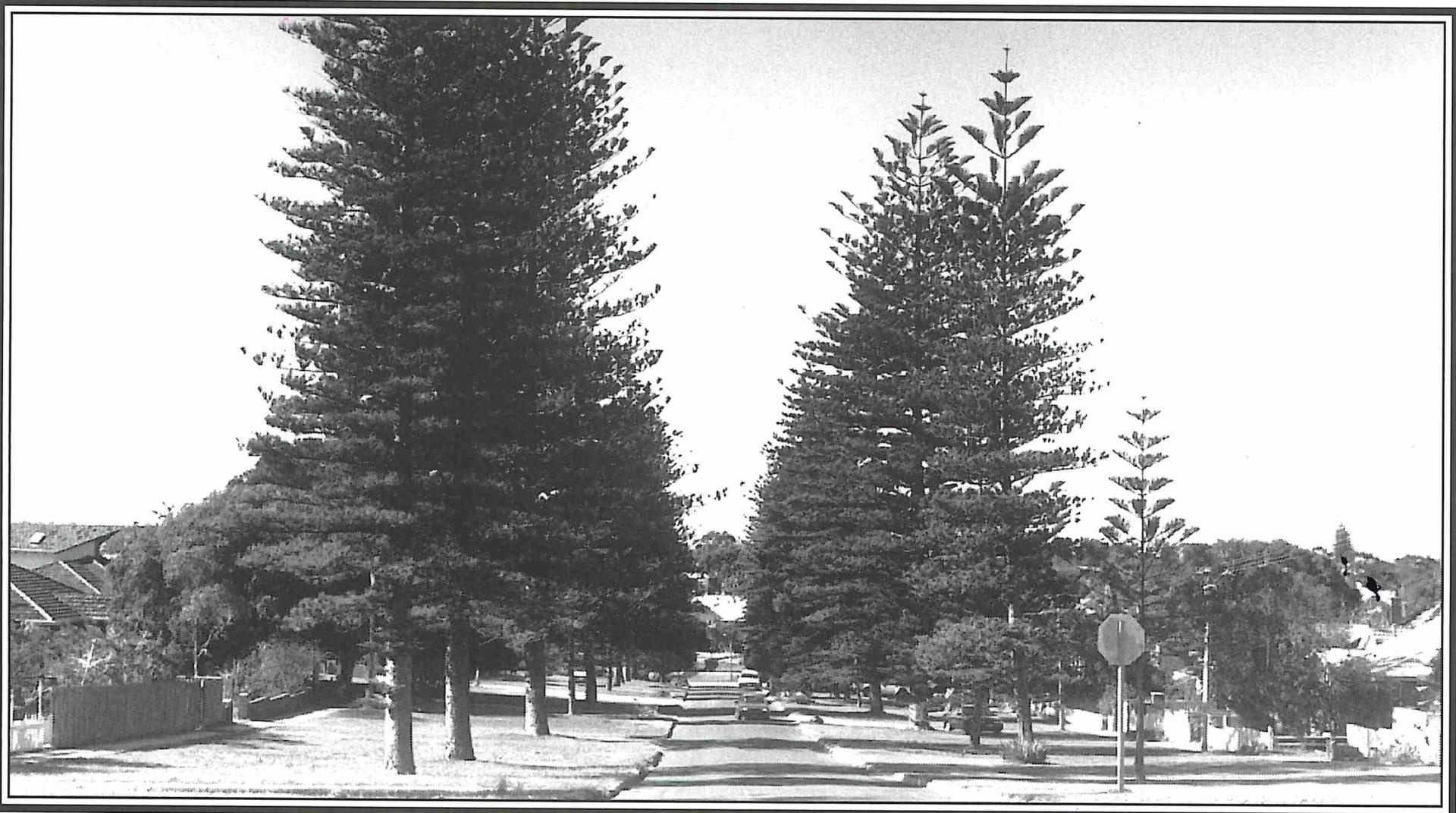History of the Town of Cottesloe
Aboriginal and Torres Strait Islander
 |
Nyoongar people believe that their ancestors have lived in the South West of Western Australia since time began, with evidence confirming their occupation for at least 45,000 years.[i] Within the Town of Cottesloe, two places of significance for First Nations’ peoples have been registered on the Department of Indigenous Affairs Aboriginal Sites database, being Mudurup and Rocky Bay.[ii]
‘Mudurup’ or Moonderup (pronounced ‘Moordoorup’ or ‘Murdarup’) is a ceremonial site located at Mudurup Rocks, south of the Cottesloe Surf Life Saving Club. Mudurup Rocks is considered one of the most important spiritual coastal sites on the Swan Coastal Plain. ‘Mudurup’ means ‘place of the whiting’. Before European settlement in Cottesloe, Nyoongar peoples fished at Mudurup during mid to late summer, the seasons of Birak (December to January) and Bunuru (February to March).[iii]
‘Rocky Bay’ is the second registered significant site, and identifies the narrow crossing point between Rocky Bay on the Swan River in Mosman Park and the Indian Ocean at the south end of Cottesloe. A further two unregistered sites where artefacts have been recorded are at Victoria Street Station and Macarthur Street.[iv] These sites reflect camps along the route taken by Aboriginal peoples as they moved between the ‘Derbarl Yerrigan’ (Swan River) and the coast, according to the seasons and food sources.
|
District
 |
The district was named Cottesloe on 21st September 1886 by Sir Frederick Napier Broome (Western Australia's governor from 1883 to 1890). The name Cottesloe was chosen in honour of the brother of Captain C.H. Fremantle who became Baron Cottesloe in 1874.
|
 |
The first recorded visit by Europeans to the Cottesloe district occurred much earlier with the arrival in January 1697 of three Dutch ships under the command of Captain Willem de Vlamingh.
It was a further 132 years before any settlement was made. The first of a group of British settlers (under the command of Captain James Stirling) to settle in Cottesloe was John Butler on 250 acres with river frontage (now Peppermint Grove). Butler built a house for his family beside the rough track between Perth and Fremantle. The house soon gained a reputation for the excellent hospitality provided to travellers of the track and became known as the 'Bush Inn' or 'Halfway House'.
Convicts, transported from the United Kingdom, were put to work on the Perth to Fremantle track and in 1858 the road was completed. In 1872 the road was declared a public highway. The Perth to Fremantle railway line was completed in 1881 and a siding was constructed, which became known as 'Bullen's Siding'.
Cottesloe was declared a suburban area at the time it was officially named, but it was nearly two years later before the first 4-acre lots were sold. In the mid-1890s there was a rush to take up land and a number of houses were erected. The first permanent residence to be built near Cottesloe Beach was 'The Summit' in Avonmore Terrace for Mr and Mrs J.C.G. Foulkes. By 1898 the population of Cottesloe was 1,000.
|
Local Council
 |
The beginning of local government in Cottesloe dates back to the first meeting of the Cottesloe Roads Board held in December 1895. Rates were levied for the first time in 1896. With sea breezes being considered good for one's personal constitution, Cottesloe beach began to attract residents and day visitors and also led to the establishment of the Ministering Children's League Convalescent Home.
In 1896 the first school opened in St Columba's Presbyterian hall, with an initial enrolment of 30 students. With an increase in numbers a larger premise was constructed in 1898 to house the 208 students. A private school was also operated by Miss Annie Nisbet.
|
 |
The first decade of the 1900s saw a change in the status and further development of Cottesloe. With the intention of attracting new residents, the Roads Board developed and promoted the beach front. However, issues soon arose over beach attire and behaviour including the contentious issue of mixed bathing. Safety then became the dominant concern, leading to the formation of volunteer life-saving patrols in 1908, which in turn led to the formation of the Cottesloe Life Saving and Athletic Club and the erection of a clubhouse.
After a referendum of residents, government approval was sought for the conversion of the Cottesloe Roads Board to a municipality. The Cottesloe Municipality was approved and gazetted on 20 September 1907. John Stuart was elected as the first mayor and the first Council was formed. In 1908 Lord Cottesloe gave permission for the municipality to use his coat of arms.
|
 |
A complete historical list of Council Membership is available HERE
|
Freeman of the Town
|
1974 - Cecil Leonard Harvey
2003 - Maurice Frederick Bridgewood
2003 - Maurice Hobart McNamara
|
Community
 |
As the community grew, churches and places of work ship were constructed, several new charitable institutions opened and another primary school opened. The Ocean Beach Hotel opened in January 1908 and the Hotel Cottesloe was built in 1905. Both establishments have maintained their positions and popularity to the present day.
Sport and leisure activities became popular in the area, and the Cottesloe Golf Club was formed in 1908.
It was also during this period that Cottesloe’s renowned Norfolk Island pines were first planted in Cottesloe in John Street. During the years of 1910 to 1920 Cottesloe continued to grow and despite competition from other beachside areas Cottesloe beach continued to draw crowds of people on the weekends. New guest houses and tea-rooms were built, particularly around the John Street area.
|
|


|
In 1911 Mr Claude de Bernales purchased Judge Pennefather's property and renamed it Overton Lodge. Mr de Bernales transformed the Lodge into a Spanish style mansion that has become the principal building of Cottesloe - better known nowadays as the Cottesloe Civic Centre.
Amongst the famous people to reside in Cottesloe were John Curtin (Australia's Prime minister from 1941- 45), Dr Roberta Jull (Western Australia's first woman doctor) and Elizabeth Clapham (Western Australia's first woman elected to local government)
|
The Depression in Cottesloe
 |
With 1930 came the depression, unemployment was rising, businesses closing and families suffering. The Council raised loans to provide work for some of the unemployed and those who fell behind in paying their rates bills.
Following the depression was another building boom. In 1930 the Perth-Fremantle Road became Stirling Highway and in 1932 Swanbourne Terrace was renamed Marine Parade.
During World War II Cottesloe became a centre of the war effort. Defence positions were erected, the golf course was taken over by the Americans for an army camp and the Ocean Beach Hotel was used by the US Navy as a recreational leave base. Post-war refugees were billeted in many of the larger homes in Cottesloe. The Lady Lawley Cottage was used from 1944 to 1946 as a convalescent home for women members of the armed services.
|
 |
Mr de Bernales was forced to dispose of his assets following the collapse of his companies in 1949 and the Municipality of Cottesloe purchased Overton Lodge in 1950. After some structural alterations, it was renamed the Cottesloe Memorial Town Hall and Civic Centre and officially opened by WA's Governor, Sir James Mitchell on 30 September 1950.
The 1960's brought a new affluence into the area and further businesses were developed in Napoleon Street and along Stirling Highway.
|
1970s Onward
 |
The early 1970s brought further road extensions and improvements. In 1979 the Perth-Fremantle railway closed. Beach erosion became a major concern and much effort was expended in sand control and beachfront improvements.
The 1980s were a vibrant time in Cottesloe, with the America's Cup and a series of yacht races in 1986. More houses, particularly those with an ocean frontage, were built or renovated.
|
 |
In the 1980s people became increasingly aware of the environment, with new programs starting for reafforestation around the streets, beachfront and reserves. In January 1988 Australia's bicentenary was celebrated at the Civic Centre and a large sundial was erected above Mudarup Rocks. The Perth to Fremantle railway line was reopened on 29 July 1983.
|
Further information on the history of Cottesloe is available from the following references:
Cottesloe - A Town of Distinction, R.M. James (2007)
Heritage of Pines - A History of Cottesloe, R.M James. (1977)
Ten Decades - A Photographic History of the Town of Cottesloe, M & J Laurie. (1995)
West Australian Government (2022), Noongar History, https://www.wa.gov.au/organisation/department-of-the-premier-and-cabinet/noongar-history
Cottesloe (2022), Aboriginal Heritage Sites, Moonderup
Macintyre, K & Dobson, B (August, 2014), Indigenous significance of Mudurup Rocks, Cottesloe. Anthropology from the Shed, https://anthropologyfromtheshed.com/project/ethnography-of-mudurup-rocks-in-cottesloe-and-its-connection-to-rottnest-island-wadjemup/
Department of Indigenous Affairs (2010), Aboriginal Heritage Inquiry System, Indigenous Culture in Cottesloe